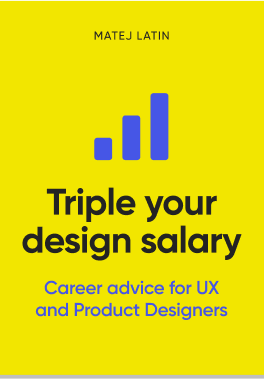Hey there,
First of all, I have some really good news: our babies are here! Our baby girl Galia and baby boy Lars were born on April 12! 🎉 🥳 They’re not yet home as I write this newsletter but they are well and should come home in a couple of days. I’m really proud of my wife for how well she handled everything—the tough pregnancy and the birth. I am now a proud father but an even prouder husband.
This is the fifth edition of my weekly newsletter. In case you missed the last week’s one about burnout among designers, you can read it here.
In this newsletter:
🅰 Schibsted Grotesk — a cool variable font perfect for UI
📐 The complications of typographic size on the web (8 min read)
💪 The best UX designers constantly do this to level up faster than their peers (5 min read)
🅰 Schibsted Grotesk — a cool variable font perfect for UI
I had been doing some research for typography in UI design lately and was looking to find a variable font that is great for UI. What do I mean when I say that it’s great for UI? It means that it’s highly legible even at smaller sizes, I mean take a look at the pronounced dot in the letter “i” for example. That, plus the fact that it’s a variable font makes it very flexible too. It comes in regular and italic style but only for the Latin alphabet for now. You can download it here.
📐 The complications of typographic size on the web
Setting font sizes on the web is complicated. Just considering that we need to design a good reading experience across the gazillion of the devices out there can be overwhelming. But what if I told you that pixels aren’t really pixels? Sometimes a pixel in CSS will actually mean two pixels on the screen. The technology evolved beyond the capabilities of CSS and we’re trying to catch up. But there are even more considerations/problems. I already mention this in my free course and in my book: not all typefaces are the same size. You may set two different typefaces to 16 pixels but one will look bigger than the other. The x-height of the typeface is the major contributing factor here. Nick Sherman goes into a couple more problems with setting font sizes in his article for Google Fonts.
💪 The best UX designers constantly do this to level up faster than their peers
Have you ever sat in a design peer review at work and someone had a great suggestion to what is being presented? How did you react? Did you secretly wish that you were the one who came up with that suggestion? I think that’s a normal reaction. But how can you turn it into something better than envy? How can you make it useful? It’s quite easy actually. Instead of thinking: I wish I gave that great suggestion, think how can I improve to make similar great suggestions in the future? Chris Lee wrote a wonderful post about this, if you want to learn and grow as a designer, learn how to learn from your peers.
Oh, one more thing. My post about how I increased my salary by more than 500% in my design career is trending on Medium.
That’s it for this Monday. Have an awesome week! 👋
Cheers,
Matej
